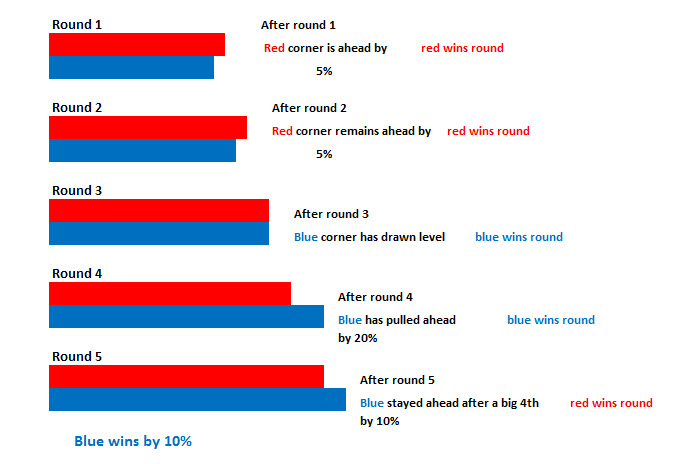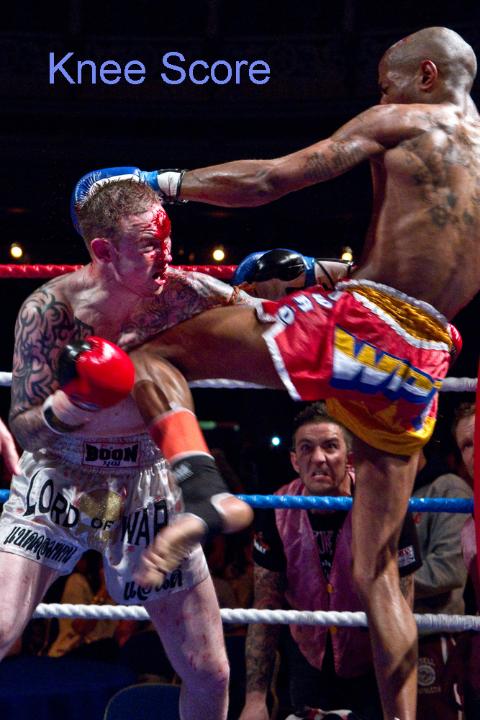Judging Muay Thai - a brief overview
Judges in Muay Thai attempt to decide which of the two fighters they are judging are the strongest in terms of Muay Thai across the whole fight. In doing this they are judging and comparing Muay Thai and the application of Muay Thai skills by the two exponents, rather than some type of generic stand-up fighting art.
As such the judges apply specific judging criteria to determine this.
Who wins the fight?
Judges have to compare the performance of two boxers and determine who is the strongest in Muay Thai terms. This slide from a Thai Boxing Board of Sport judging course for foreign officials helps to explain this.
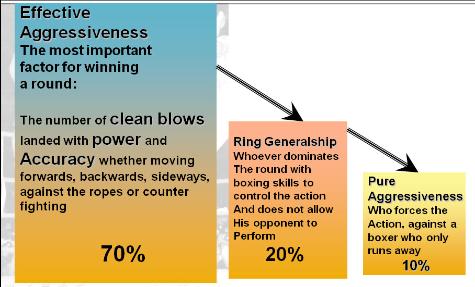
Which techniques score?
The simple answer is all effective Muay Thai techniques. It is possible to score with all Muay Thai techniques; kicks, punches, knees, and elbows. However, judges consider number of things when deciding which of the two competitors have been most effective.
The following criteria are taken from an English translation of scoring criteria from the Thai Boxing Board of Sport. The first two are considered together to determine the winner of a round.
- The boxer who strikes with more clear Muay Thai weapons on target wins the round
An oversimplification but still a useful rule of thumb: The boxer who lands more clean kicks and knees on their opponent’s body wins the round. If you move your opponent with your kick or can unbalance your opponent first and follow with a technique, that is better still. It is important to note these can be delivered while moving forwards, backwards or sideward. Balance after delivery is important (Punches, elbows and leg kicks do score but as detailed earlier you have to really show effect with these weapons).
2. The boxer who scores more heavy powerful attacks wins the round
Again, an oversimplification but also a useful rule of thumb: If boxers don’t land cleanly with kicks but hit the arms and show effect, they score equally to kicks landing on target but not showing an effect. Punches and leg kicks can score well if they show real effect on the opponent.
3. The boxer who does more damage to his opponent wins the round
Another oversimplification but yet again another useful rule of thumb: If everything else is close judges look for real differences in the damage caused by blows. For example, if the same number of kicks and knees to the body landed by both boxers, judges may award a fight to a boxer who made his opponent very tired through being hit with strong weapons or cut their opponent with an elbow or some similar damage.
4. The boxer who shows more attacking
techniques wins the round
Yet another oversimplification but useful rule of thumb: if two boxers are equal in all of the above respects; perhaps because they are very equally matched or are not skilful enough to score with appropriate techniques, judges should award the fight to the boxer who attacks more or who tries to make a fight of it.
5. Better offensive, defensive, evasion
or counterattacking skills wins the round
6. The boxer who fouls less wins the
round
__________________________________________________
Which techniques score best?
There are a number of techniques that are considered to be the best scoring techniques. These are the primary techniques that win fights and include:
· The primary scoring criteria and the most effective technique is a legal technique of any type that ‘knocks out’ or ‘stops’ an opponent so that they are unable to continue the fight.
· The next best scoring technique is any legal technique that either knocks an opponent to the floor with a concussive blow or causes the referee to give an ‘eight count’ (if the referee gives an eight count, two points are initially be deducted from the counted boxer’s score card, if the boxer fights back strongly or has previously dominated the round, a one point difference may be awarded). (the ‘A grade’ techniques detailed earlier).
· Unbalancing an opponent with kick or throwing action and immediately following with a strong striking technique
· Knocking an opponent off their feet with a strike or kick (The ‘B+ grade’ techniques detailed earlier)
· Continually throwing an opponent down showing domination
· An attacking technique or combination that results in an opponent turning their back on the attacking boxer in fear.
Recording scores
The winner of the fight on an individual judge’s score card will have been awarded the greatest number of points.
While a 10 point must system is used where the winner of the round is awarded 10 point and the loser less depending on the action in that round, fights are judged as a whole- the winner being the boxer who wins the fight overall . How big rounds are won by is considered by judges and not just how many rounds are edged by one boxer. This means it is possible for a boxer to win fewer rounds but win them bigger then their opponent and still win a fight. As a basic guide the following points are awarded:
10-10: Can’t pick a winner
10:10+ One boxer edges the round
10-9: One boxers wins the round clearly
10-9: Both boxers are knocked down but one boxer wins the rest of the round
10-8: A knock down (with an 8-count)
10-8: Total domination throughout the round by one boxer
10:7: Two knock downs (8-count)
Score card examples
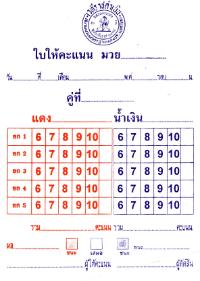
Score card from Radjadamnern Stadium bangkok
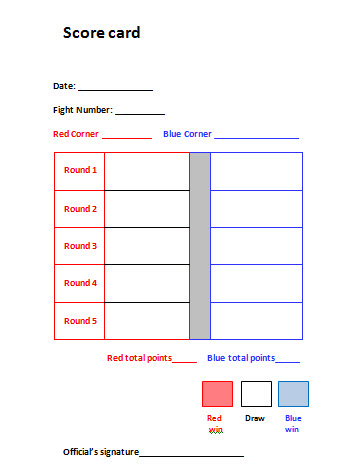
A score card from the UK
Some video footage of a Muay Thai scoring seminar filmed by Nopstar (Nopadon) and posted on his excellent Muay Muay Thai website http://www.mymuaythai.com
Senior Thai judges have used the analogy of a running race or marathon to explain scoring.
Although not a common occurrence, here is an example of how a boxer can win three out of five rounds and still lose the fight
